

This is final image of how the exhibition will be displayed in preparation for Fis 2017. We had 7 walls full of art work and two computers to display our website.
Plans and considerations relating to our physical installation.


This is final image of how the exhibition will be displayed in preparation for Fis 2017. We had 7 walls full of art work and two computers to display our website.
The research poster was perhaps one of the most important components of the project.
We did some research of the posters made by past students. We noted the positive posters were colourful and caught the eye. Some of the weaker ones were text heavy. We tried to find a happy balance in our design.
Using the illustrations created by Thomas, and Julia and I worked on the layout. Nadia and I worked on the text together to ensure that it was informative and interesting. Together, the poster contained all of our ideas to create the end result.
I took on the responsibility of outlining the text alongside the graphics. The ribbons were used as titles for each section. This created a uniform design from the infographics straight through to the research poster. Some of Thomas’s graphics were adapted and tailored to suit the information. I asked Thomas to create some new graphics for certain parts, while I made modifications to accurately communicated the information.

First Draft Research Poster
After we presented our first poster, we took the feedback given to us by the lecturers and made improvements. Some of the text and images were too small where they could have been bigger. We also wanted to add some kind of text box to the quotes as their place on the poster at present gives the equal importance as other text that isn’t in boxes. After these changes were implemented, we printed our final poster.
I enjoyed laying out the research poster. It was important to lay it out in such as way as it communicates the entire journey of our research in the past year.

Final Research Poster
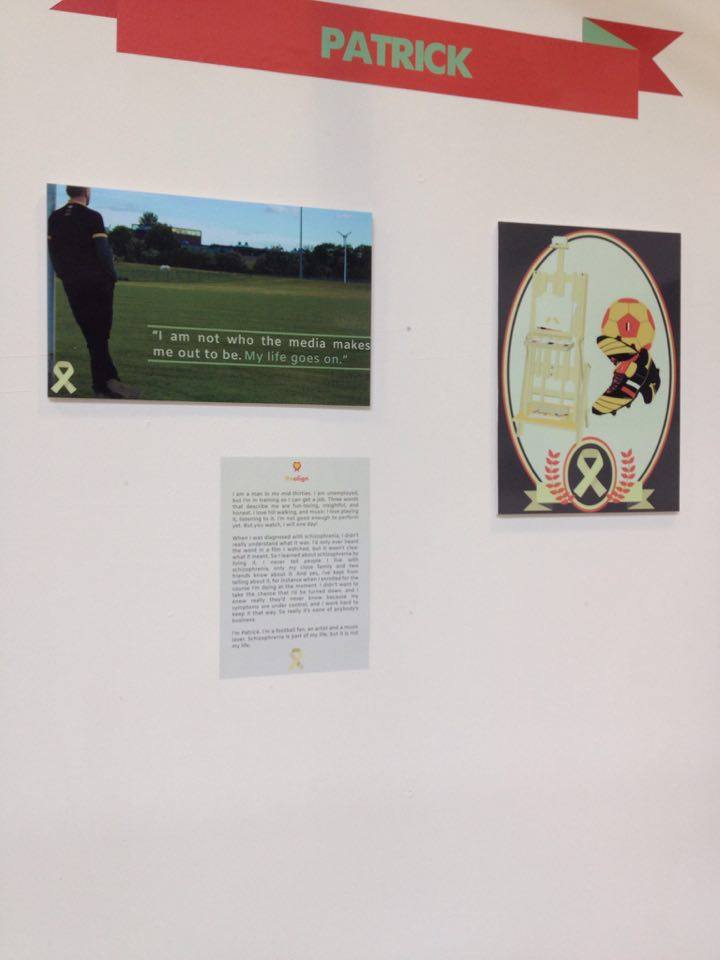
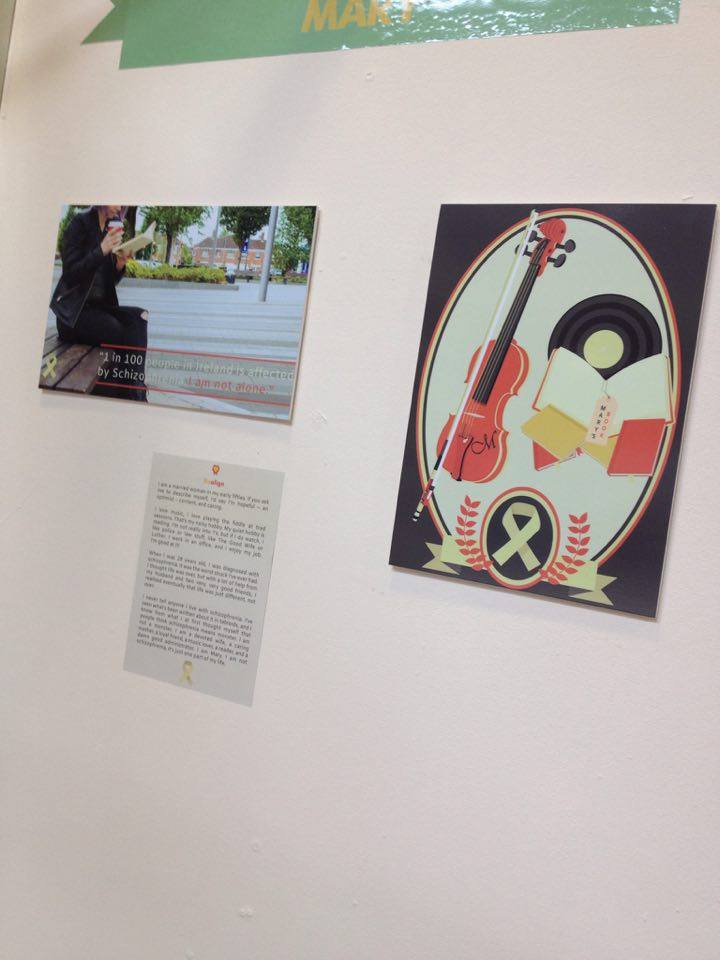
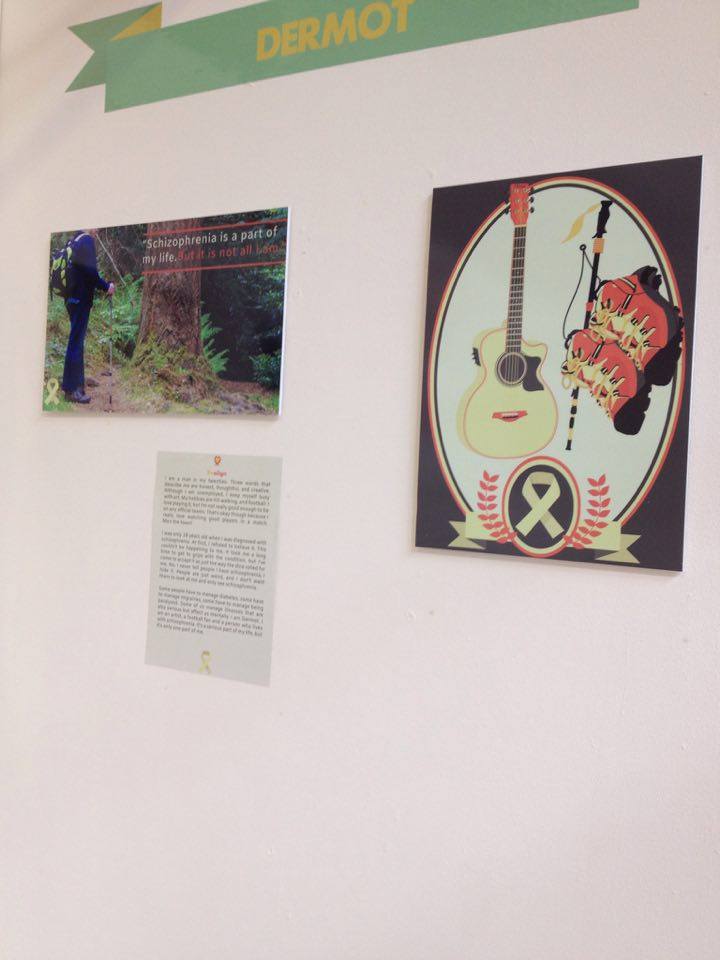
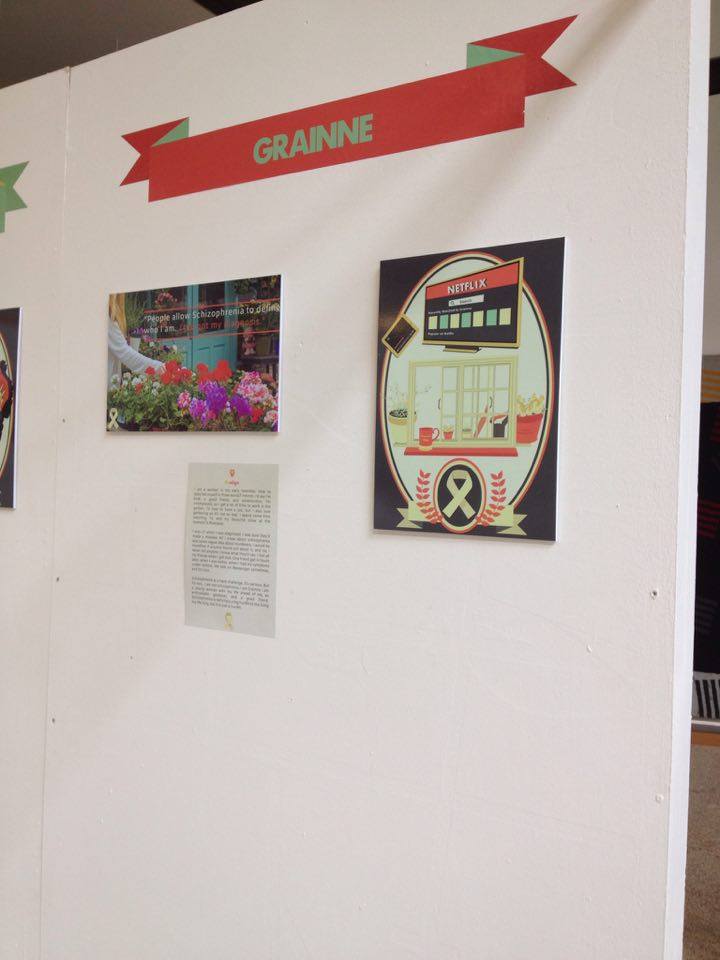
Above is a visual of how the illustration poster series was displayed in the exhibition. All the personas were displayed on individual walls.
I visited Marshes Shopping Centre to arrange for us to conduct user testing there before the Fis exhibition. Aoife Kerley was not in the office that day, but I was given her business card and sent her an email. Aoife was very helpful, and we agreed to perform user testing on Monday, 22 May.
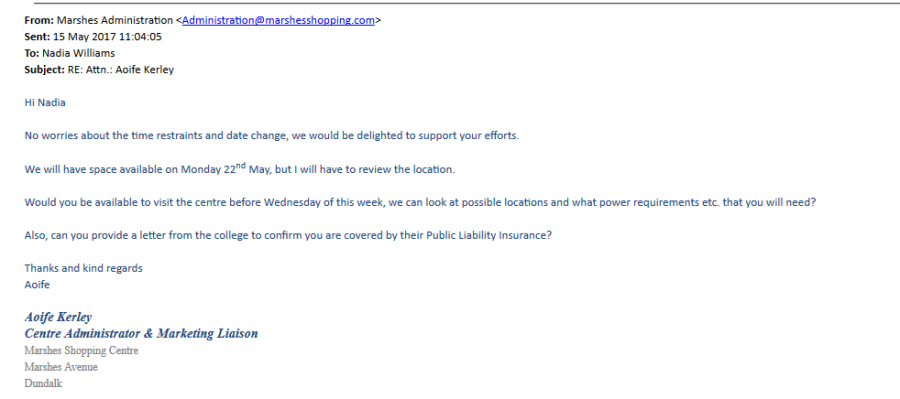
Kevin, Julia and I went to Marshes to meet with Aoife and discuss exact details. We would need at least one folding table. I arranged to borrow one from Clayotic, and arranged for collection on Monday morning. I also bought paper tablecloth to cover the table, and got a thank you present for Louise and Arnaud of Clayotic to thank them for use of the table.
I met Julia and Kevin at the location for collection of the tables, then joined them and Thomas at Marshes where I assisted with user testing. Observing users interacting with the website was a good experience, even though our primary goal was to test the impact of the infographic. I made some notes on small things to consider changing.
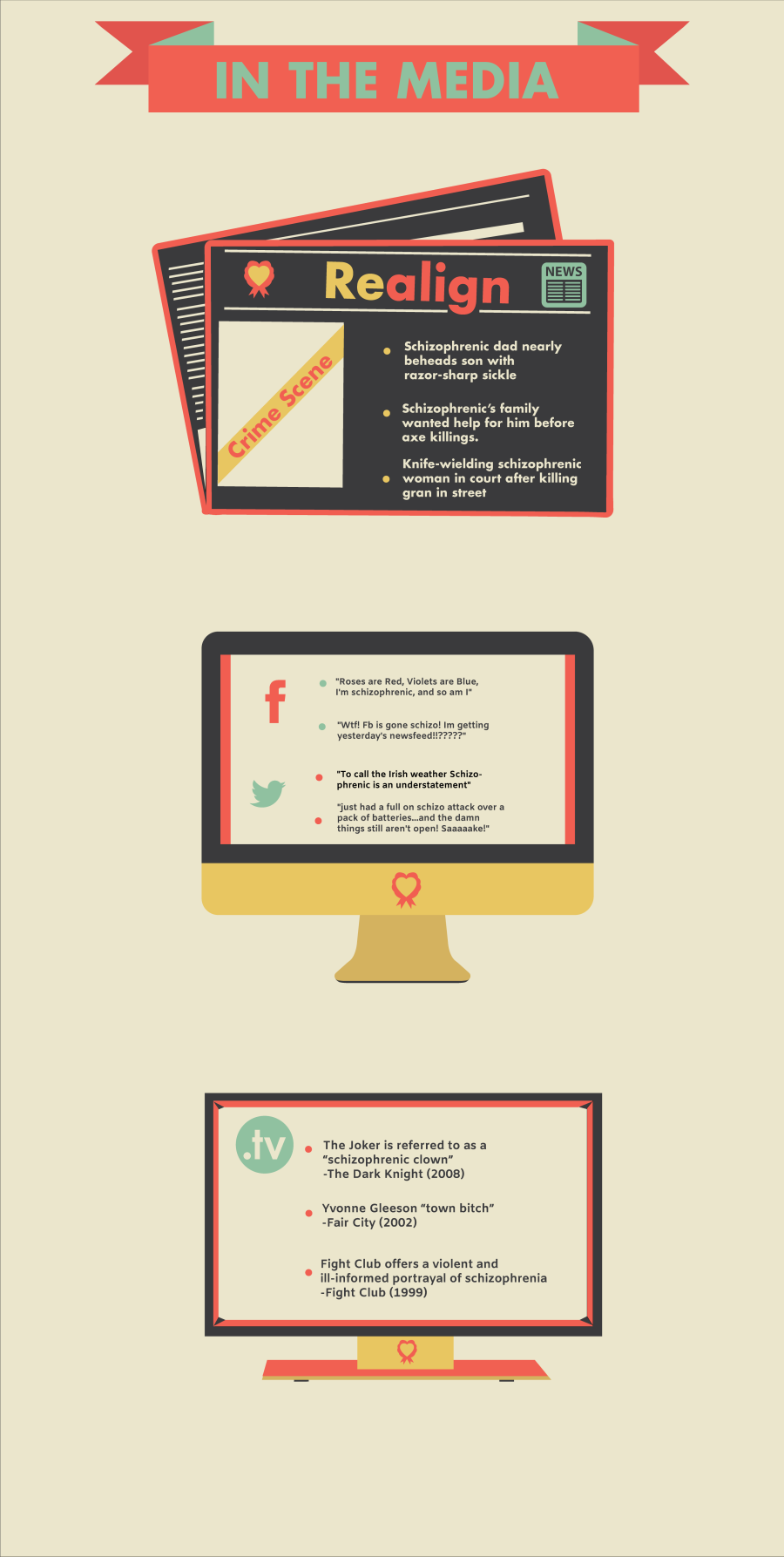
To demonstrate the problem stage of our project we created a media wall displaying our research behind the media medium’s used to show stigma in schizophrenia. I Illustrated the graphics above.
In preparation for the research poster, I wrote the text that will be placed on the poster. The text is to inform the viewer about the project and the process in which we reached our conclusions. The text will be placed in the poster once we decide on the layout.
Realign
BA (Hons) Communications in Creative Multimedia
Kevin Carolan, Thomas Noone, Julia Walsh, Nadia Williams
Can Creative Media Methods be Used to Challenge Perceptions?
Introduction
Realign is a practice-based research project that aims to tackle the stigma surrounding schizophrenia in Irish media using creative media methods. The project, which consists of three stages – educate, raise awareness and destigmatise – presents schizophrenia in an informed and creative way.
Education is achieved through an animated infographic which presents the key facts about schizophrenia. The project then raises awareness through photography and illustrations that depict the real lives of those living with schizophrenia. The final stage is destigmatisation, which is a point of view video that allows the stories of those living with schizophrenia to be heard.
Exploring the theme of hyper labelling, we discovered that terminology or labels often carry stigma. Schizophrenia as a term is highly misused in news and social media, misrepresented in entertainment media and misunderstood by the general public. A consequence of this is that a stigma is then created, a stigma that is so intrusive, people living with schizophrenia consider it to be another symptom.
→ I’m going to put my suggested edit in here, as it may be easier than commenting.
“Schizophrenia” and associated words are widely misused in news and social media, misrepresented in entertainment media and misunderstood by the general public. This creates serious stigma surrounding the condition, which is so intrusive that people living with schizophrenia consider it to be another symptom.
Aims
Realign aims to challenge people’s perceptions about schizophrenia.
Objectives
Research Methodology
-News Media ( Jan 2012 – Dec 2016) – 400 articles in total
-Social Media (2012-2016) – public Facebook posts
-2 visits to Dundalk support group (5th April 2017/24th May 2017)
-1 visit to Drogheda support group (18th April 2017)
Findings
Environmental Scan
Survey
Support Group Questionnaires
User Testing
Quotes
“I was happy to see there was a survey pertaining to schizophrenia, as I feel it is one area in desperate need of more information!” -Survey Respondent
“That definitely challenged my perception” – User Testing Participant
Conclusion
Realign aimed to tackle the stigma surrounding schizophrenia. Using creative media methods, we educated, raised awareness and presenting the real lives of those affected.
We found an increase in understanding of the condition when users were exposed to the infographic. We found the level of empathy and acceptance increased when users were exposed to stories of those living with schizophrenia. This research has shown that exposure to the three stage process has challenged the perceptions of the user. As a result, this process could be used to challenge the stigma surrounding other conditions or issues.
Members of the public we spoke to immediately made their own assumptions about schizophrenia, however once exposed to our project, many noted that their perceptions had changed.
Acknowledgements
(List them? or “thank you to” ?)
A special thank you to Shine’s Louth Regional Officer Derek Pepper, for his support and guidance throughout the project.
A thank you to all those in the Dundalk and Drogheda Shine support groups for allowing us to visit you and hear your stories.
Supervisor JJ Quinlan
Head of Creative Media research, Dr. Caroline O’Sullivan